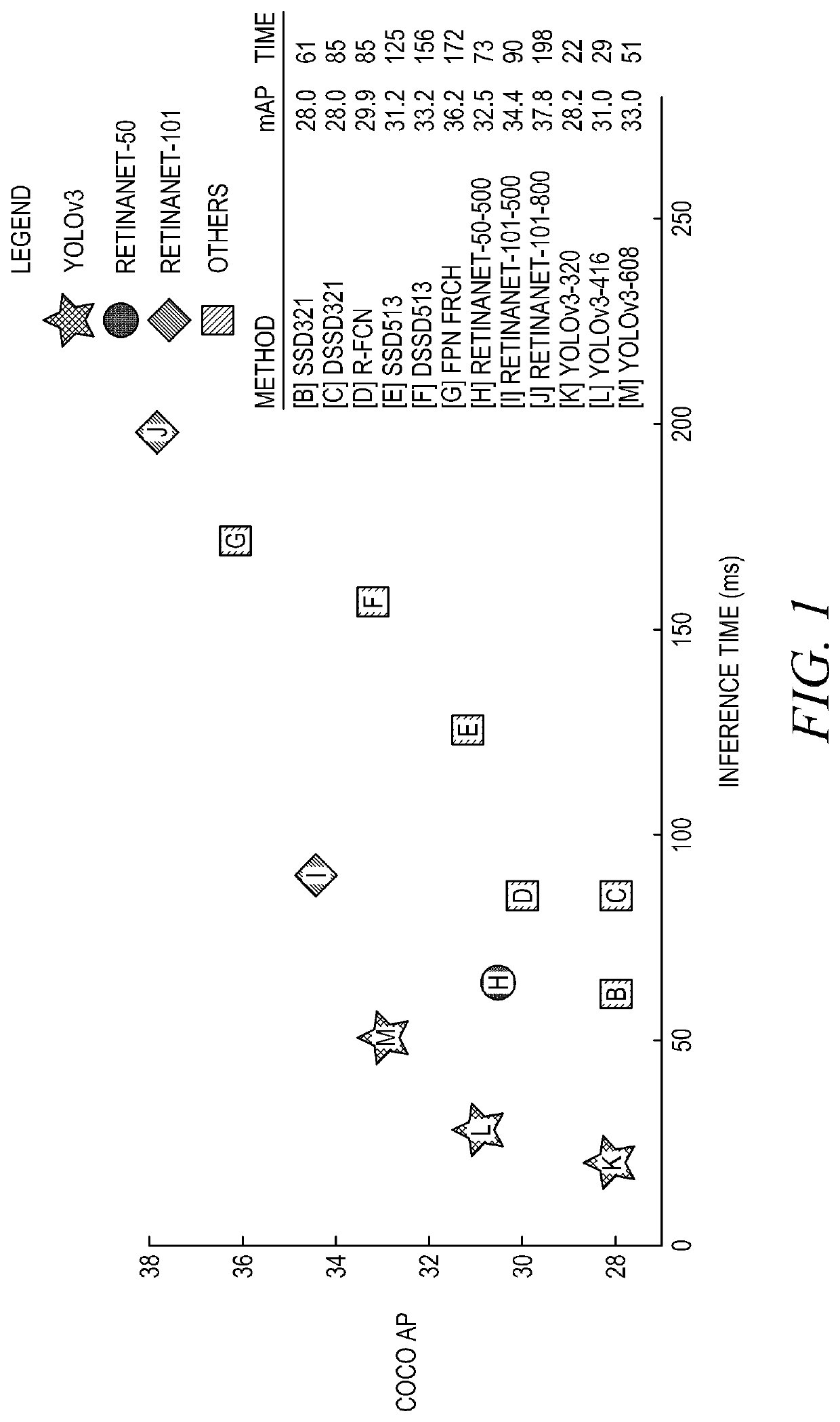Deep learning for real-time colon polyp detection
a colonoscopy and deep learning technology, applied in healthcare informatics, instruments, image enhancement, etc., can solve the problems of difficult deep learning on colon polyps, time-consuming exercise, and inability to easily determine full identification, so as to improve the detection of colon polyps early, reduce false positives and false negatives, and reduce the time interval
- Summary
- Abstract
- Description
- Claims
- Application Information
AI Technical Summary
Benefits of technology
Problems solved by technology
Method used
Image
Examples
Embodiment Construction
[0040]Polyps can occur in multiple varieties (pedunculated, flat, and sessile), and detection of flat varieties of polyps can be significantly more difficult than detection of pedunculated or sessile varieties of polyps. Flat polyps almost always visually merge into the background with truly little variation from the background context. Because of this, flat polyps tend to be missed more frequently by physicians using conventional methods.
[0041]Given that flat polyps have more chances of being missed by the physician, the present inventors have appreciated that it would be particularly important and of great value to be able to implement deep learning approaches to aid physicians in spotting polyps—particularly in spotting the flat varieties of polyps.
[0042]Object detection is a computer vision technique for finding objects of interest in an image. Object classification merely classifies an object of interest. Object detection both classifies and locates objects of interest in an im...
PUM
 Login to View More
Login to View More Abstract
Description
Claims
Application Information
 Login to View More
Login to View More - R&D
- Intellectual Property
- Life Sciences
- Materials
- Tech Scout
- Unparalleled Data Quality
- Higher Quality Content
- 60% Fewer Hallucinations
Browse by: Latest US Patents, China's latest patents, Technical Efficacy Thesaurus, Application Domain, Technology Topic, Popular Technical Reports.
© 2025 PatSnap. All rights reserved.Legal|Privacy policy|Modern Slavery Act Transparency Statement|Sitemap|About US| Contact US: help@patsnap.com



